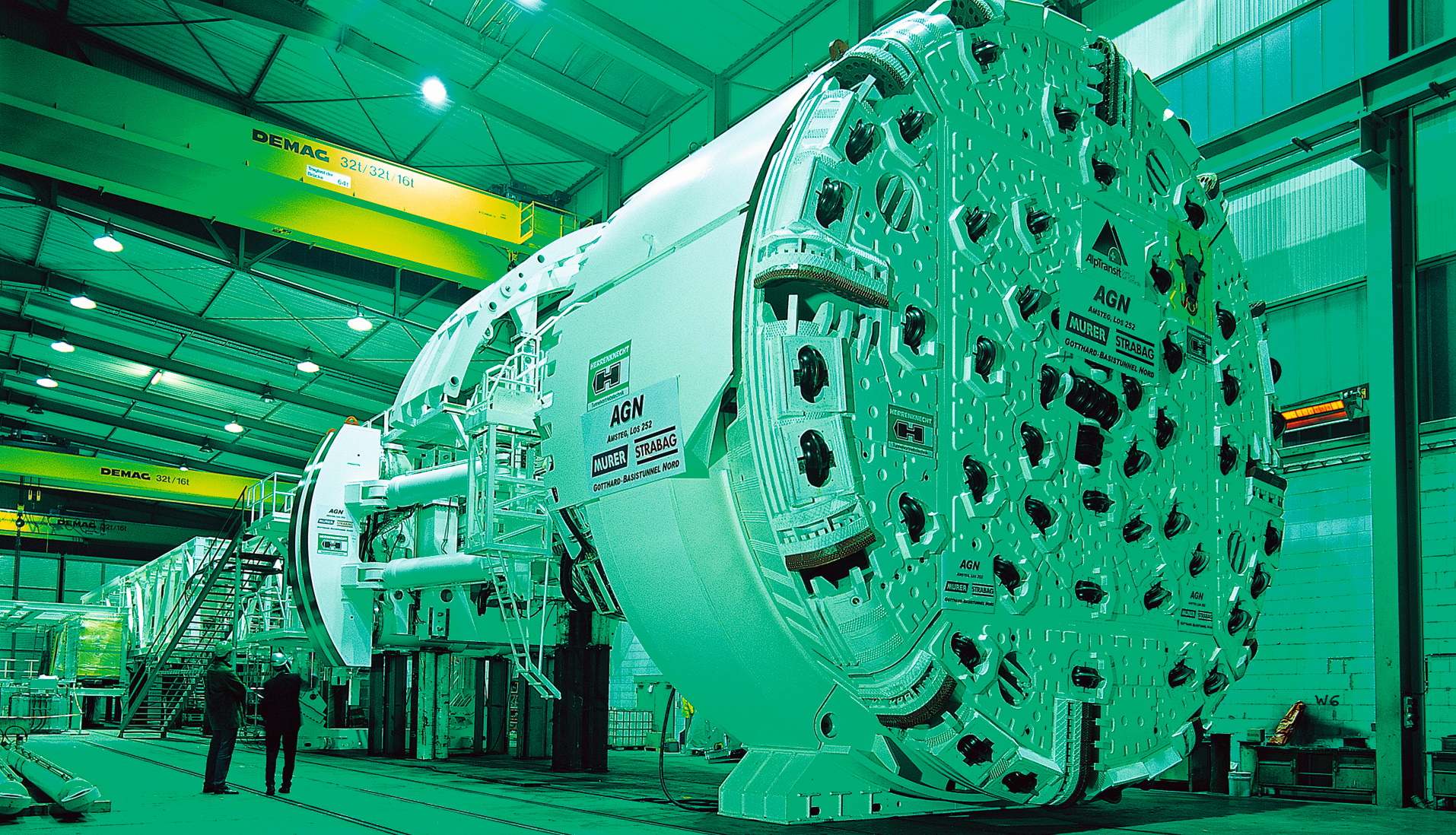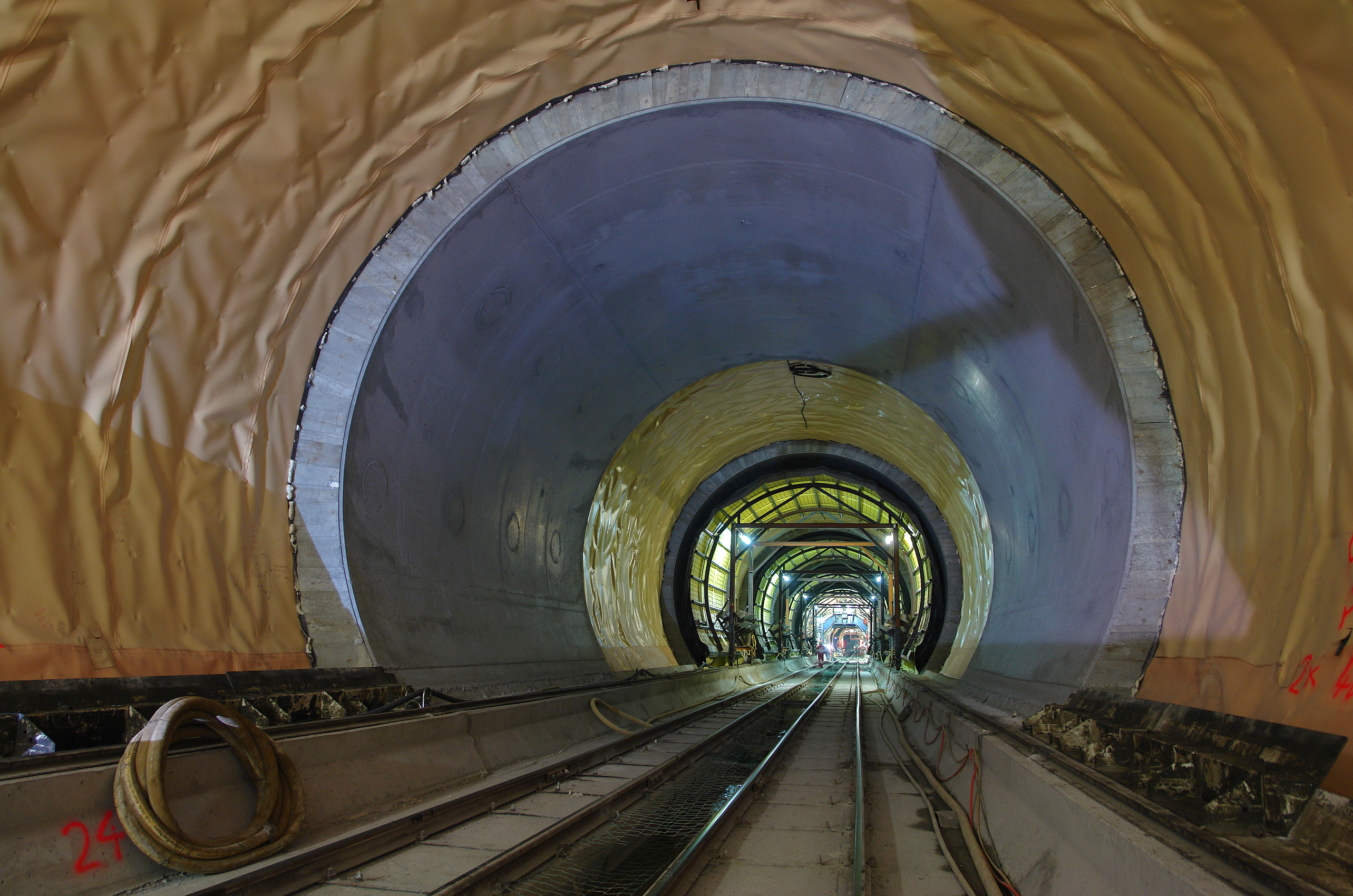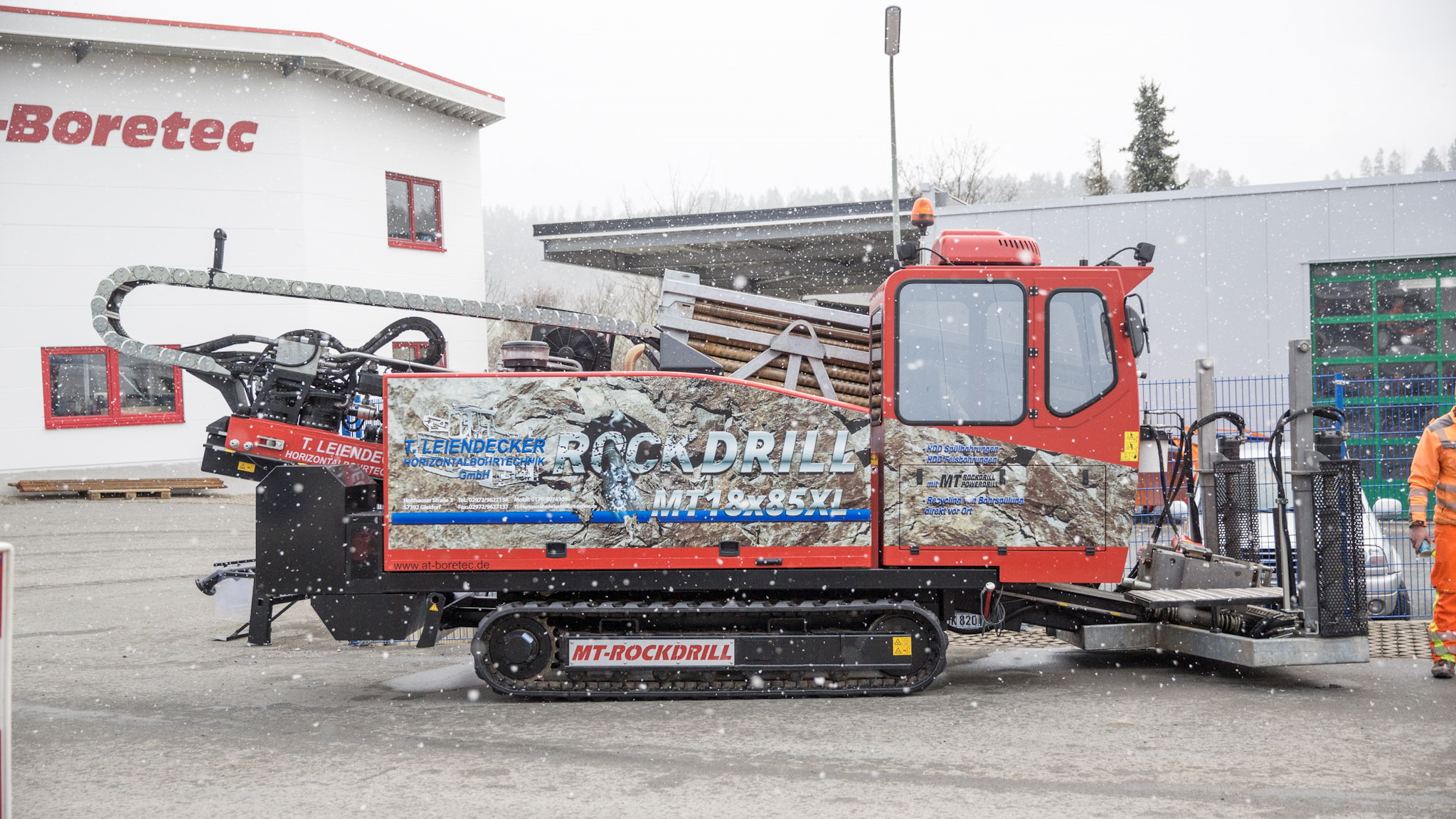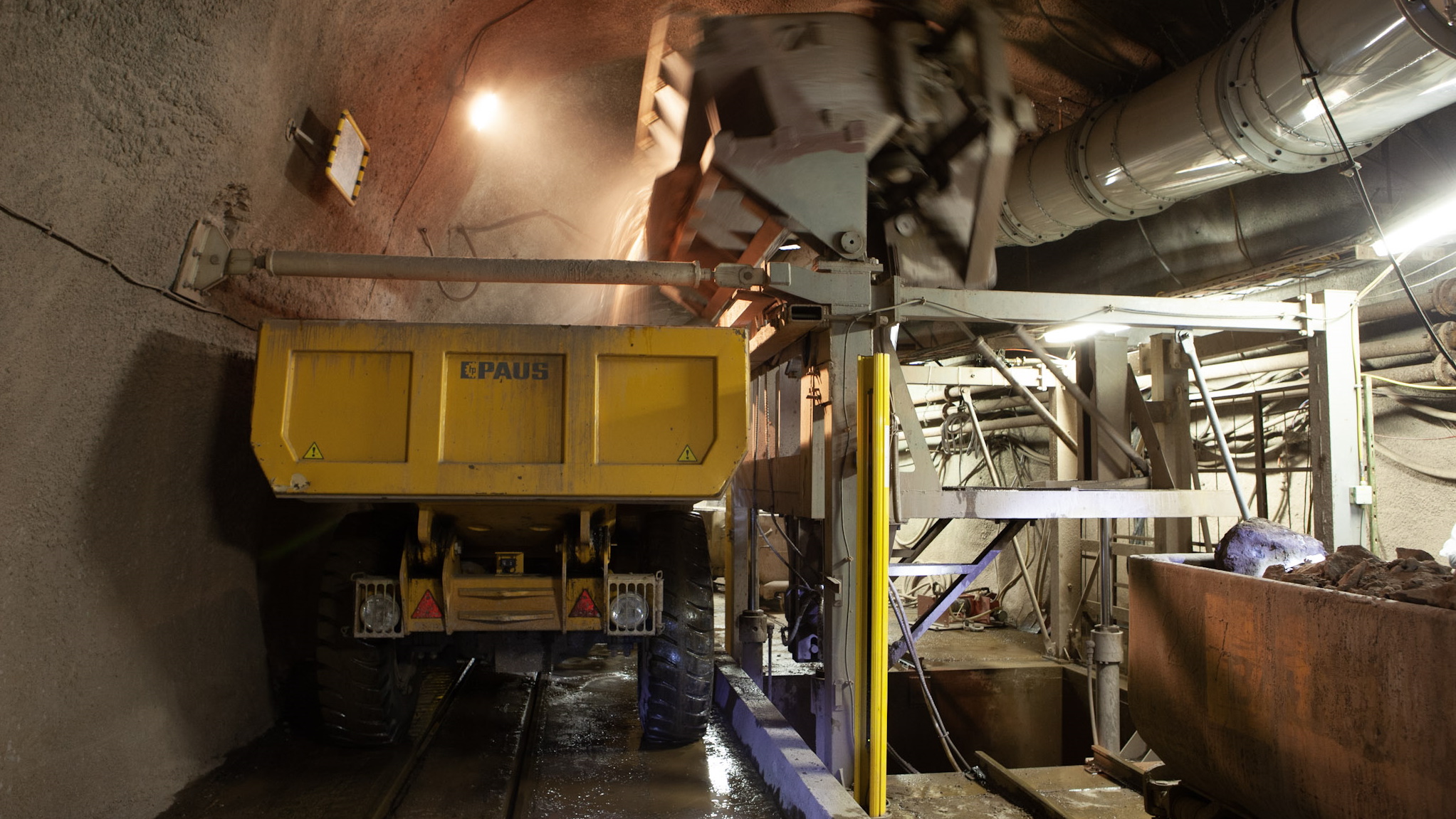One of them is the Gotthard Base Tunnel, which at an impressive 57 kilometres is set to become the world’s longest tunnel. As many as 150 freight trains already run on the Gotthard axis every day. Once the tunnel is completed in 2017, this is due to rise to over 200 trains a day, corresponding to a transport capacity of 40 million tons of goods each year.
The Gotthard Base Tunnel, which is being built in different sections, will then allow trains to speed through at up to 250 km/h. They will run in two single-track tunnels, spaced at 40 m from each other and linked every 325 m by connecting galleries. To date contractors have excavated 70 percent of the tunnel structure: a total length of 153.3 km (including all shafts and connecting galleries).
Driving and intermediate headings
A TBM may be up to 400 metres in length, including the drilling head and all additional systems for the gripper. It is equipped with a crane, conveyor belt, control cab, a shotcreting machine and a trailer for workshop equipment. Given its size, this machine is far less mobile than the highly versatile method of blasting attack, which however only covers between six and ten metres a day. The same steps are constantly repeated: drilling, charging, detonating, ventilating, supporting and removal of muck. Whether blasting or using a TBM – tunnelling machines make high demands on operators, mechanics and engineers. Underground building sites are characterised by the presence of computer-controlled TBMs, drilling jumbos with several drill trucks, spoil vehicles, laser equipment and hydraulically operated liners.
A new hose line in five minutes
Through the mountain with the mini
Such a mini-container also arrives on a trailer when HANSA‑FLEX Ittigen is called to tunnelling sites with its mobile installation service. If fitting is not a quick job, the container is stationed on site. For instance, when a large TBM is to be started up at a new construction site or dismantled after a tunnel has been broken through. In such cases HANSA‑FLEX’s dense network of branches comes in very handy, ensuring that spare parts are available at any time. This naturally also applies to industrial hoses for water/air and concrete, something of enormous benefit to the staff responsible on site: reliable suppliers help to streamline the processes involved in tunnelling.
But HANSA‑FLEX also overhauls the complete line engineering on a TBM before it moves on to new tasks. Repairs to hydraulic cylinders and prompt delivery of sealing kits or new hydraulic units are assured by the specialist centres of competence within the HANSA‑FLEX group.




